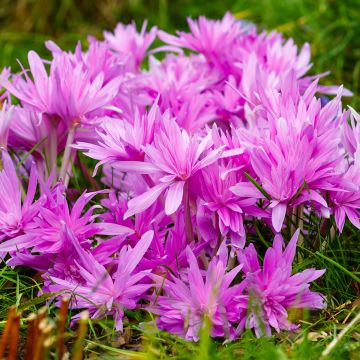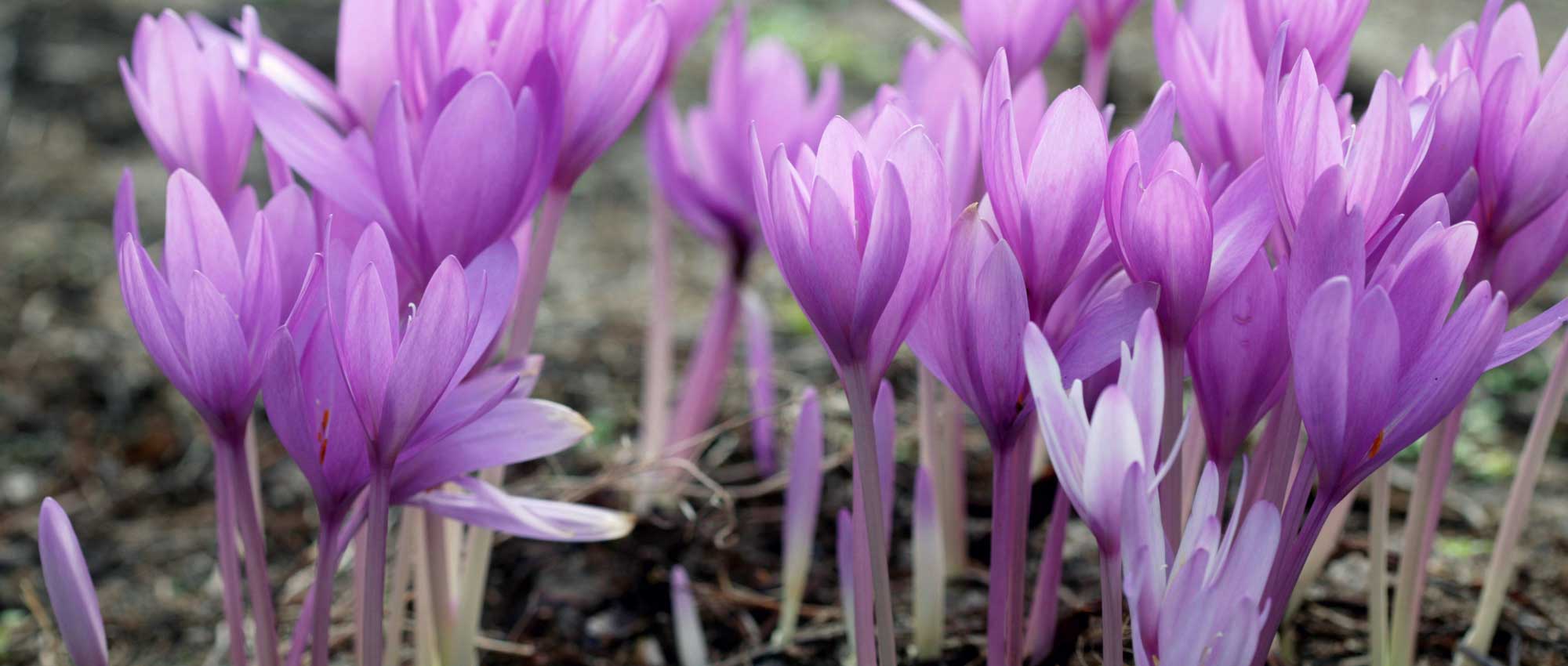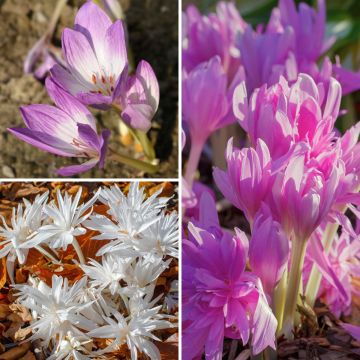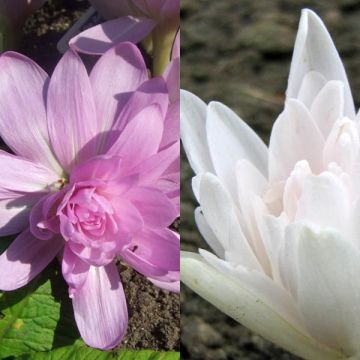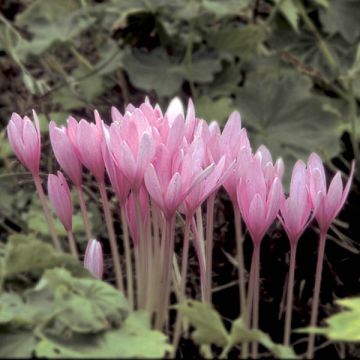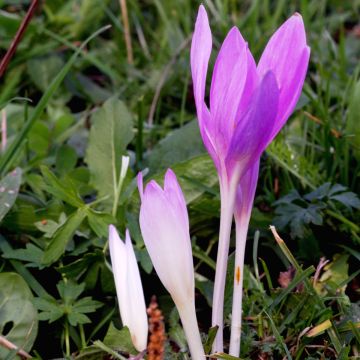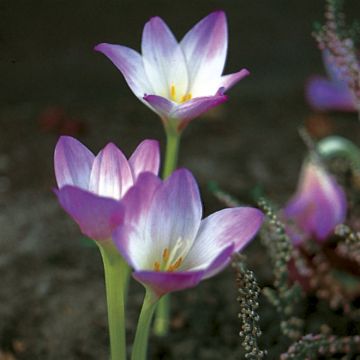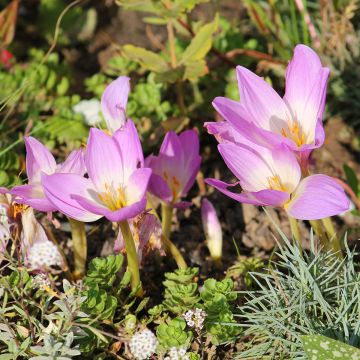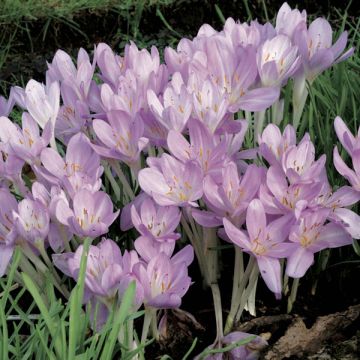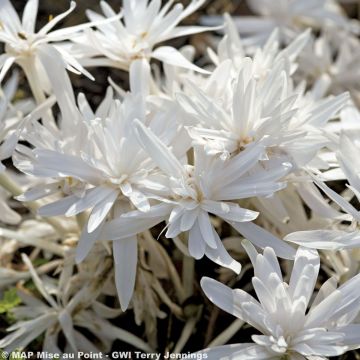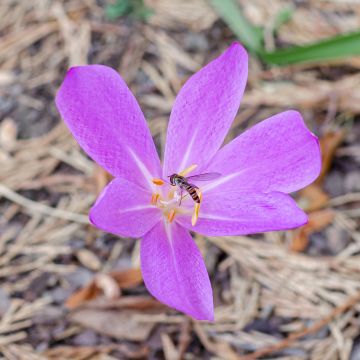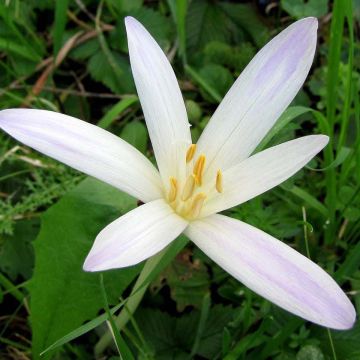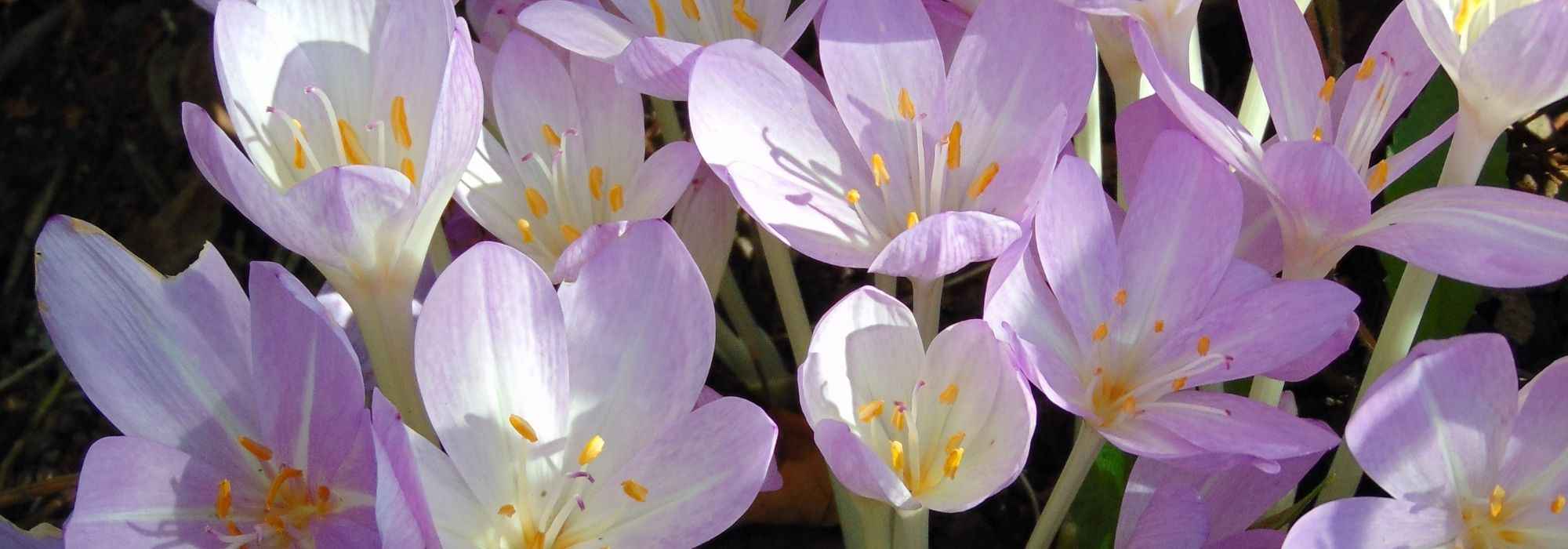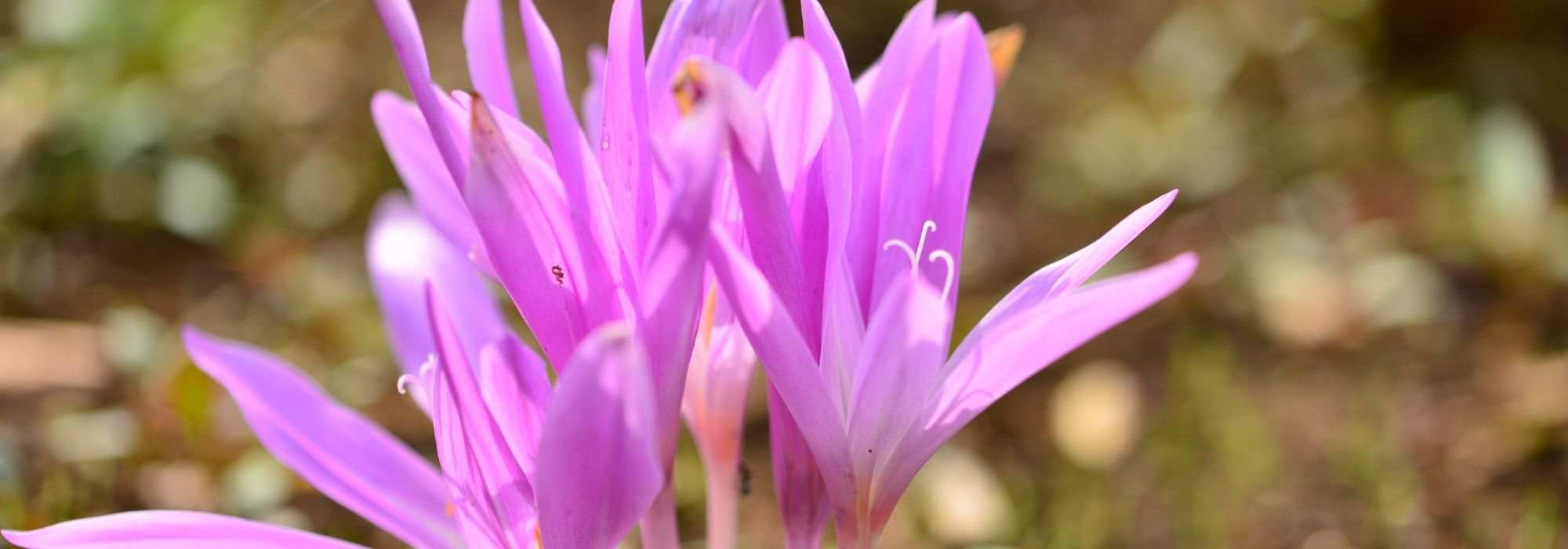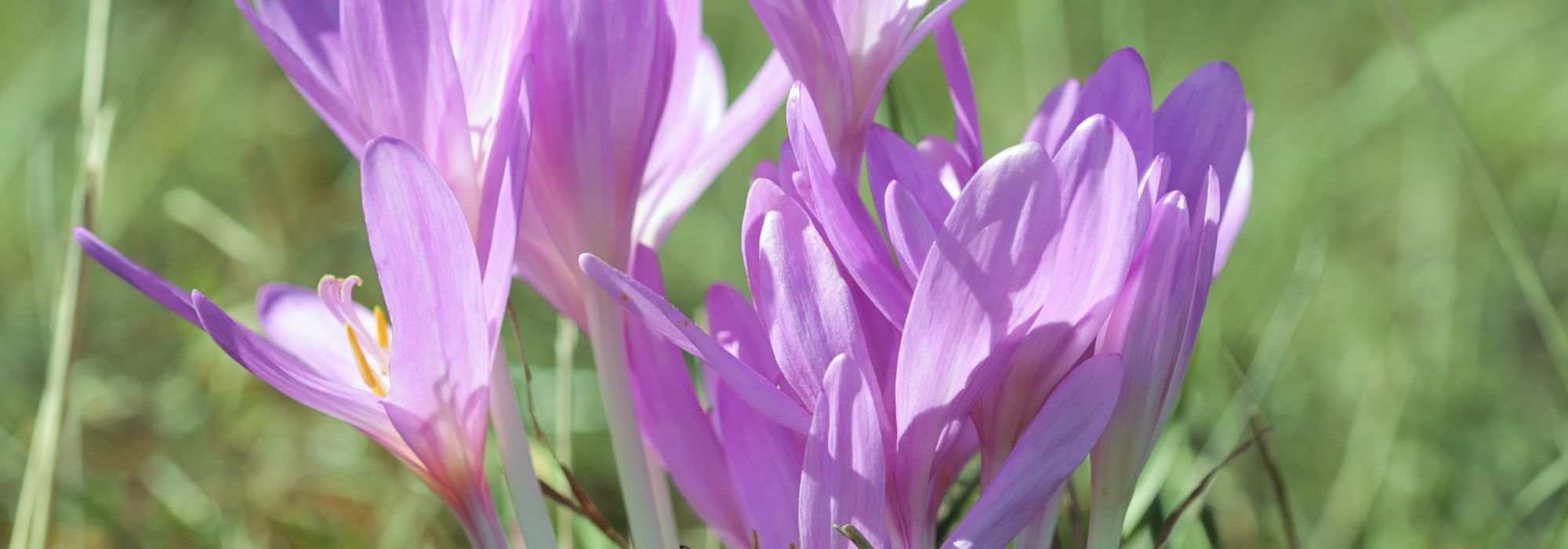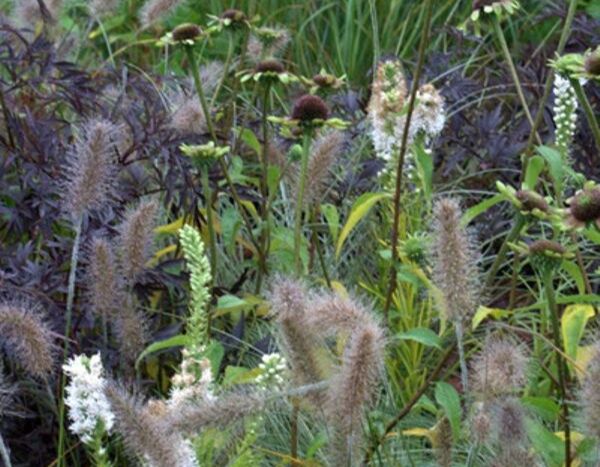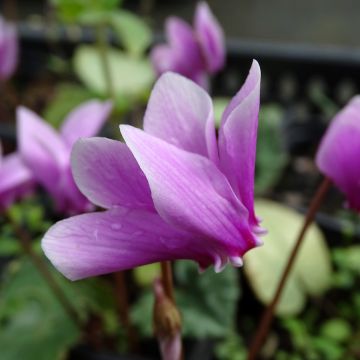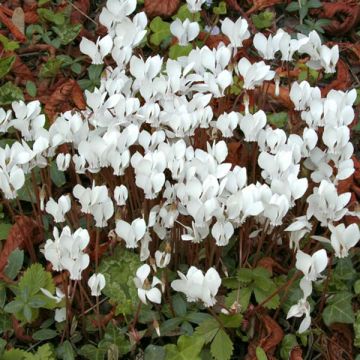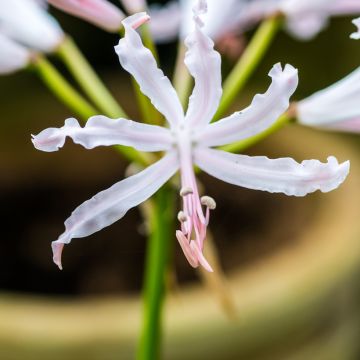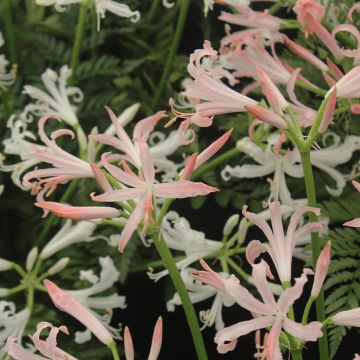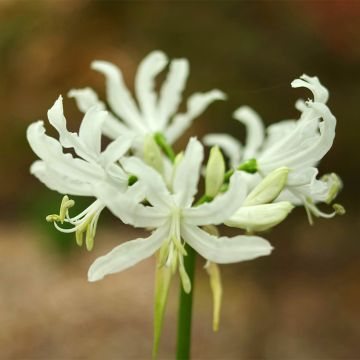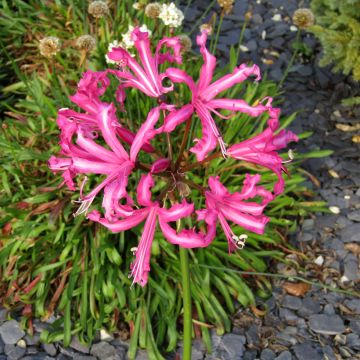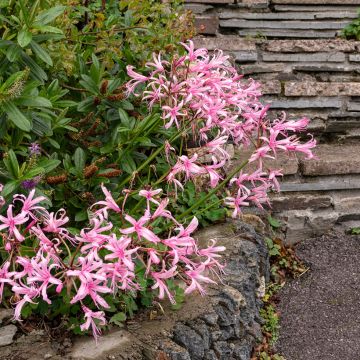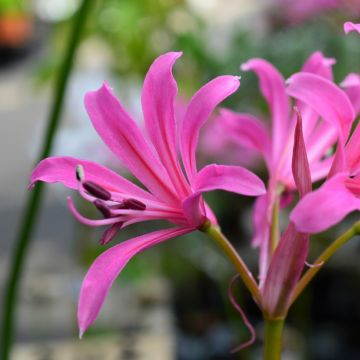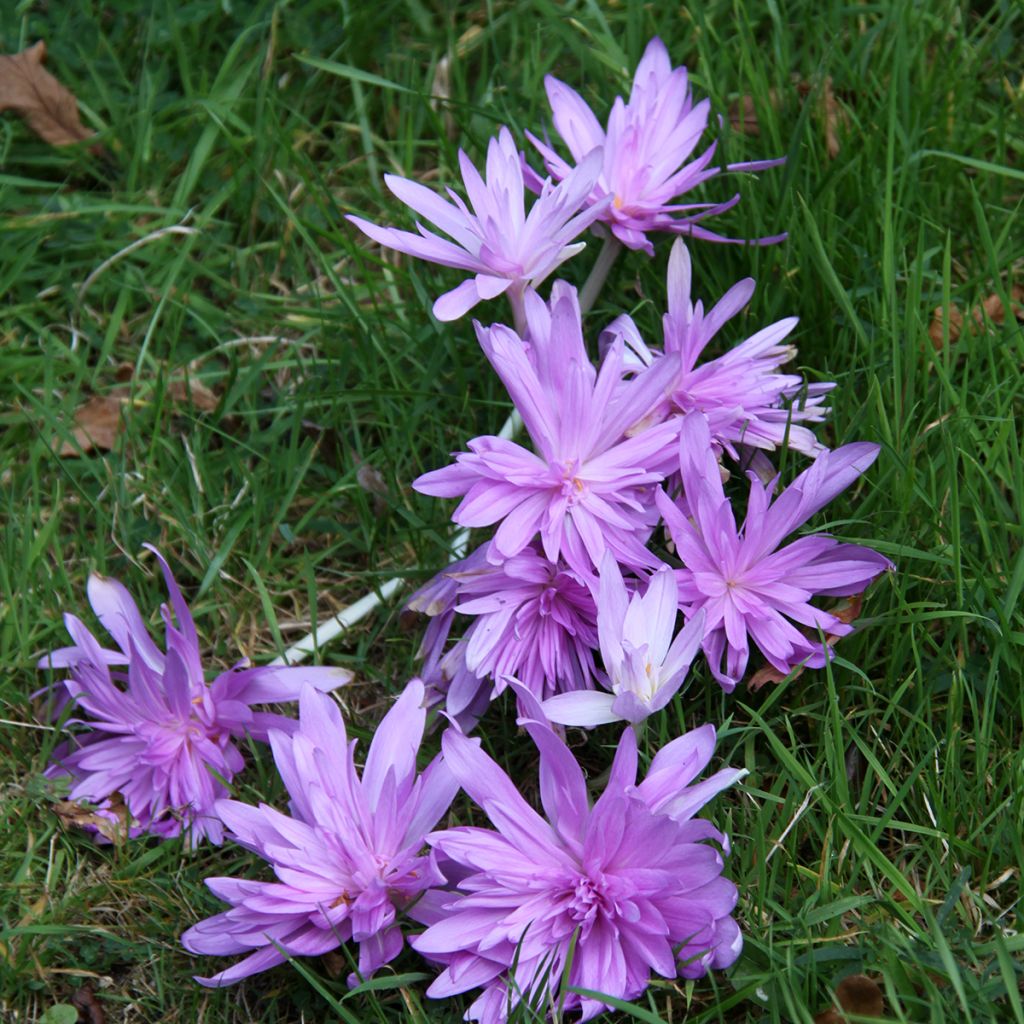

Colchicum autumnale Pleniflorum
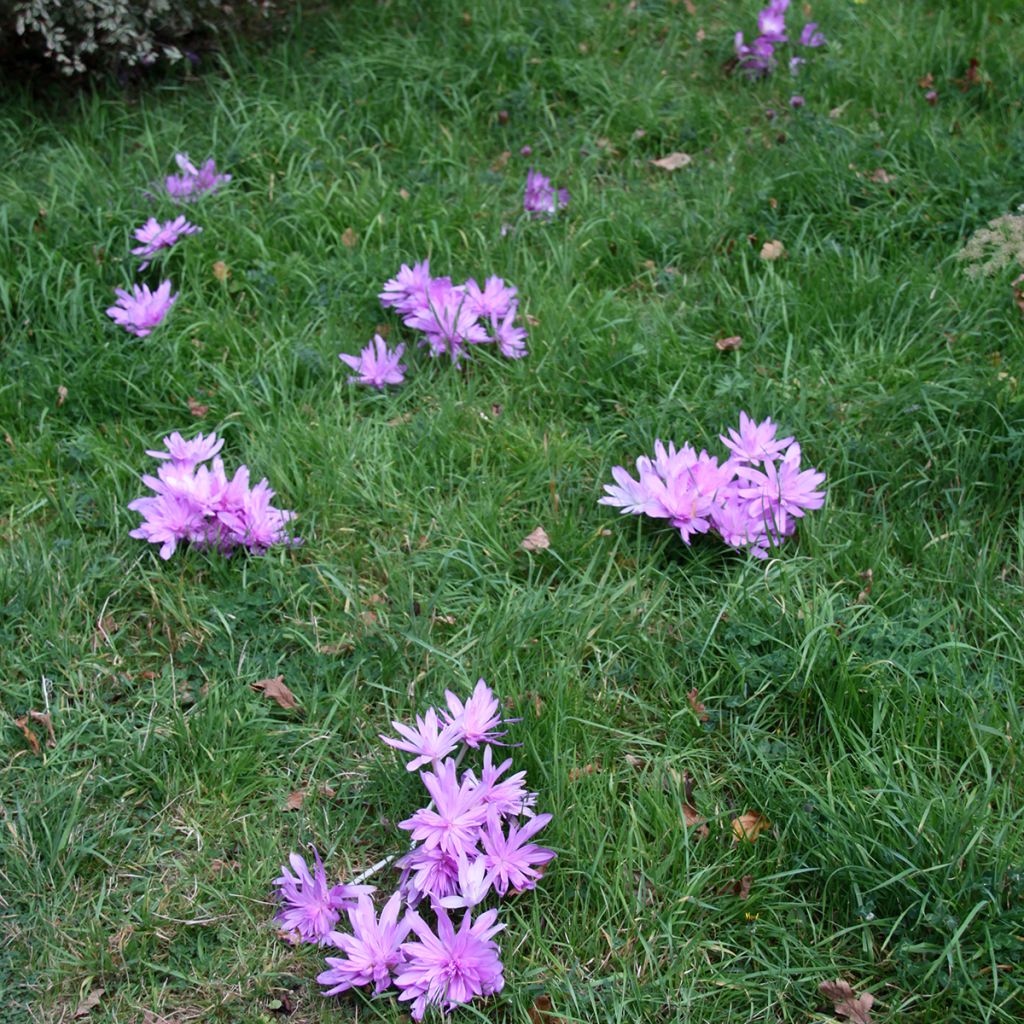

Colchicum autumnale Pleniflorum
Colchicum autumnale Pleniflorum
Colchicum autumnale Pleniflorum
Meadow Saffron, Autumn crocus
Special offer!
Receive a €20 voucher for any order over €90 (excluding delivery costs, credit notes, and plastic-free options)!
1- Add your favorite plants to your cart.
2- Once you have reached €90, confirm your order (you can even choose the delivery date!).
3- As soon as your order is shipped, you will receive an email containing your voucher code, valid for 3 months (90 days).
Your voucher is unique and can only be used once, for any order with a minimum value of €20, excluding delivery costs.
Can be combined with other current offers, non-divisible and non-refundable.
Why not try an alternative variety in stock?
View all →This plant carries a 6 months recovery warranty
More information
We guarantee the quality of our plants for a full growing cycle, and will replace at our expense any plant that fails to recover under normal climatic and planting conditions.
Does this plant fit my garden?
Set up your Plantfit profile →
Description
Colchicum autumnale 'Pleniflorum', also known as Colchicum autumnale 'Roseum Plenum', is a lovely double-flowered form of the famous pink colchicum that blooms late in the season. Its fully bloomed flowers resemble a pink water lily. They emerge from the ground in September, while the foliage is absent. The large, light green, wide and lanceolate leaves develop in spring and dry out in early summer, during the bulb's dormancy period. It is a very hardy and robust bulbous plant that easily naturalises in a flowery meadow or a large border. It thrives in full sun, in fertile, rather moist, clayey soils. It is beautiful in containers.
Colchicum autumnale 'Pleniflorum' is a natural mutation of the autumn crocus or meadow saffron native to temperate Europe. The autumn crocus, with its simple pink flowers, is found in moist meadows. It is a perennial plant with a storage organ called a corm. It belongs to the Colchicaceae family. Although its flowers resemble those of crocuses, colchicum has 6 stamens instead of 3 like the latter, which belong to the Iridaceae family. A corm is a swollen stem covered with scales, unlike a bulb, which is formed of thickened scales like in lilies or garlic. At maturity, the 'Pleniflorum' form reaches a height of 15 to 20cm (6 to 8in). The foliage emerges in spring, in the form of 5 or 8 large, smooth, light green leaves, wrapped around a very short stem. They measure up to 40cm (16in) in length and 5 to 6cm (2in) in width. In the centre of the leaves, one or more large elongated fruits are borne on the central stem. The leaves disappear in early summer, marking the corm's entry into a period of rest. The flowering usually takes place in September, with each 'bulb' producing 1 to 6 large double flowers that are 10cm (4in) tall and 8cm (3in) wide. They are composed of numerous pink tepals that gradually open into stars. The fruits, when ripe, split open to release round, black seeds. All parts of the colchicum are toxic.
Colchicum autumnale 'Pleniflorum' is a somewhat nostalgic plant that heralds the arrival of autumn. It can be used in rockeries, under large deciduous trees, and in natural lawns that will not be mowed before summer. Pair it with crocuses and grape hyacinths, and create ephemeral pots with its bulbs. It thrives better in mountainous or continental climates, with pronounced winters and humid springs.
Colchicum autumnale Pleniflorum in pictures
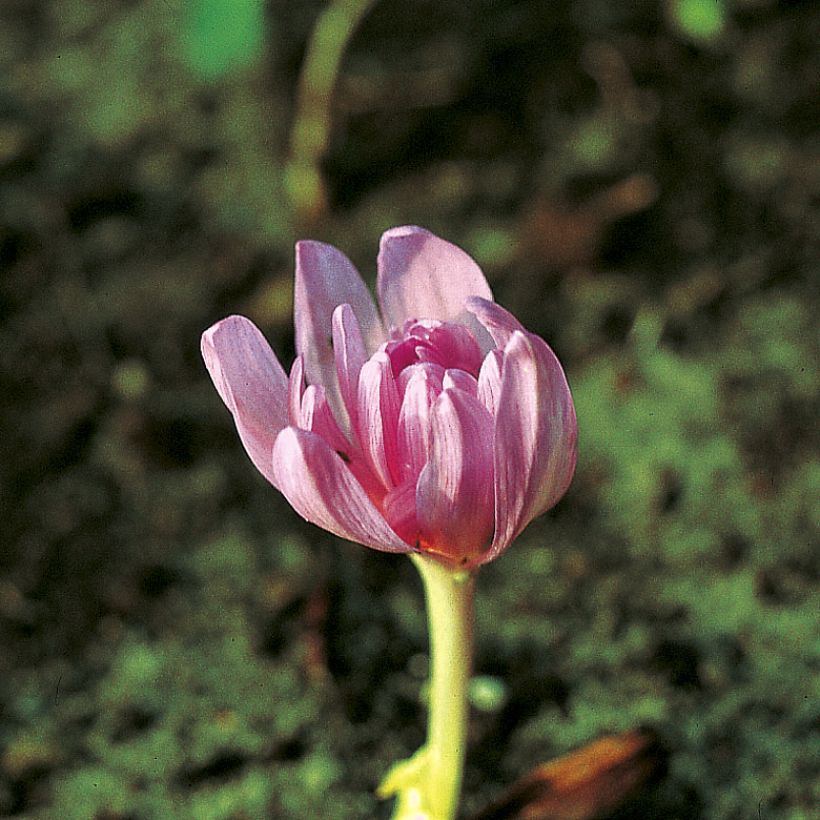

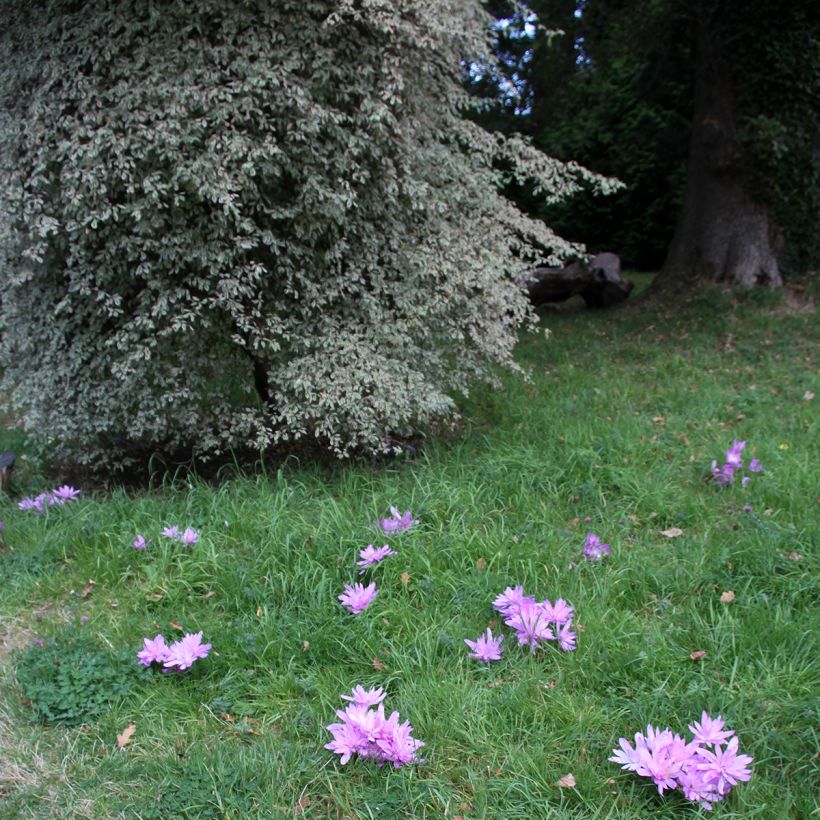

Plant habit
Flowering
Foliage
Safety measures
Botanical data
Colchicum
autumnale
Pleniflorum
Liliaceae
Meadow Saffron, Autumn crocus
Western Europe
ingestion
Cette plante est toxique si elle est ingérée volontairement ou involontairement.
Ne la plantez pas là où de jeunes enfants peuvent évoluer, et lavez-vous les mains après l'avoir manipulée.
Pensez à conserver l'étiquette de la plante, à la photographier ou à noter son nom, afin de faciliter le travail des professionnels de santé.
Davantage d'informations sur https://plantes-risque.info
Other Colchicum
View all →Planting and care
Plant in full sun in deep, fertile, well-drained soil that is not too dry. Plant them 15 cm (6in) deep. Space them 10 to 15cm (4 to 6in) apart. They will establish themselves very quickly. Plant in July-August so that they can flower in the first year of planting. After planting, leave them in place, as they do not like to be disturbed. After flowering, they go dormant until spring and their leaves will bloom in April-May and disappear completely in June.
Planting period
Intended location
Care
Planting & care advice
This item has not been reviewed yet - be the first to leave a review about it.
Similar products
Haven't found what you were looking for?
Hardiness is the lowest winter temperature a plant can endure without suffering serious damage or even dying. However, hardiness is affected by location (a sheltered area, such as a patio), protection (winter cover) and soil type (hardiness is improved by well-drained soil).

Photo Sharing Terms & Conditions
In order to encourage gardeners to interact and share their experiences, Promesse de fleurs offers various media enabling content to be uploaded onto its Site - in particular via the ‘Photo sharing’ module.
The User agrees to refrain from:
- Posting any content that is illegal, prejudicial, insulting, racist, inciteful to hatred, revisionist, contrary to public decency, that infringes on privacy or on the privacy rights of third parties, in particular the publicity rights of persons and goods, intellectual property rights, or the right to privacy.
- Submitting content on behalf of a third party;
- Impersonate the identity of a third party and/or publish any personal information about a third party;
In general, the User undertakes to refrain from any unethical behaviour.
All Content (in particular text, comments, files, images, photos, videos, creative works, etc.), which may be subject to property or intellectual property rights, image or other private rights, shall remain the property of the User, subject to the limited rights granted by the terms of the licence granted by Promesse de fleurs as stated below. Users are at liberty to publish or not to publish such Content on the Site, notably via the ‘Photo Sharing’ facility, and accept that this Content shall be made public and freely accessible, notably on the Internet.
Users further acknowledge, undertake to have ,and guarantee that they hold all necessary rights and permissions to publish such material on the Site, in particular with regard to the legislation in force pertaining to any privacy, property, intellectual property, image, or contractual rights, or rights of any other nature. By publishing such Content on the Site, Users acknowledge accepting full liability as publishers of the Content within the meaning of the law, and grant Promesse de fleurs, free of charge, an inclusive, worldwide licence for the said Content for the entire duration of its publication, including all reproduction, representation, up/downloading, displaying, performing, transmission, and storage rights.
Users also grant permission for their name to be linked to the Content and accept that this link may not always be made available.
By engaging in posting material, Users consent to their Content becoming automatically accessible on the Internet, in particular on other sites and/or blogs and/or web pages of the Promesse de fleurs site, including in particular social pages and the Promesse de fleurs catalogue.
Users may secure the removal of entrusted content free of charge by issuing a simple request via our contact form.
The flowering period indicated on our website applies to countries and regions located in USDA zone 8 (France, the United Kingdom, Ireland, the Netherlands, etc.)
It will vary according to where you live:
- In zones 9 to 10 (Italy, Spain, Greece, etc.), flowering will occur about 2 to 4 weeks earlier.
- In zones 6 to 7 (Germany, Poland, Slovenia, and lower mountainous regions), flowering will be delayed by 2 to 3 weeks.
- In zone 5 (Central Europe, Scandinavia), blooming will be delayed by 3 to 5 weeks.
In temperate climates, pruning of spring-flowering shrubs (forsythia, spireas, etc.) should be done just after flowering.
Pruning of summer-flowering shrubs (Indian Lilac, Perovskia, etc.) can be done in winter or spring.
In cold regions as well as with frost-sensitive plants, avoid pruning too early when severe frosts may still occur.
The planting period indicated on our website applies to countries and regions located in USDA zone 8 (France, United Kingdom, Ireland, Netherlands).
It will vary according to where you live:
- In Mediterranean zones (Marseille, Madrid, Milan, etc.), autumn and winter are the best planting periods.
- In continental zones (Strasbourg, Munich, Vienna, etc.), delay planting by 2 to 3 weeks in spring and bring it forward by 2 to 4 weeks in autumn.
- In mountainous regions (the Alps, Pyrenees, Carpathians, etc.), it is best to plant in late spring (May-June) or late summer (August-September).
The harvesting period indicated on our website applies to countries and regions in USDA zone 8 (France, England, Ireland, the Netherlands).
In colder areas (Scandinavia, Poland, Austria...) fruit and vegetable harvests are likely to be delayed by 3-4 weeks.
In warmer areas (Italy, Spain, Greece, etc.), harvesting will probably take place earlier, depending on weather conditions.
The sowing periods indicated on our website apply to countries and regions within USDA Zone 8 (France, UK, Ireland, Netherlands).
In colder areas (Scandinavia, Poland, Austria...), delay any outdoor sowing by 3-4 weeks, or sow under glass.
In warmer climes (Italy, Spain, Greece, etc.), bring outdoor sowing forward by a few weeks.






























